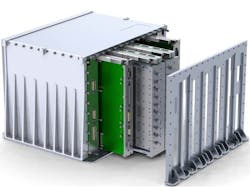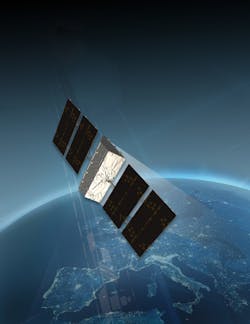Lockheed Martin picks SEAKR Engineering to help develop; secure anti-jam SATCOM payload for PTS satellites
SUNNYVALE, Calif. – Satellite communications payload experts at Lockheed Martin Corp. needed secure jam-resistant RF and microwave capability for the U.S. Space Force Protected Tactical Satellite Communications (PTS) project. They found their solution from SEAKR Engineering Inc. in Centennial, Colo.
Officials of the Lockheed Martin Space Systems segment in Sunnyvale, Calif, have selected SEAKR to help design and build a prototype payload for the U.S. Space Force's PTS program -- a next-generation capability connecting warfighters with more agile and jam-resistant satellite communications (SATCOM).
SEAKR Engineering will support Lockheed Martin in achieving significant developments in the PTS anti-jamming capabilities through collaboration on the system's advanced space digital processor.
By leveraging its strength in RF communications, SEAKR will help demonstrate PTS anti-jam capabilities by building on advanced RF processing technologies employed in its Wolverine RF processing platform.
The Wolverine reconfigurable processor uses 20-nanometer Ultrascale field-programmable gate arrays (FPGAs), as well as A/D and D/A converters. The company introduced the Wolverine processor last year.
The Wolverine features full redundancy, two PowerPC single-board computers, three reconfigurable processor boards, two power modules, and scalability to eight RF processor modules. Each RF processor includes three UltraScale FPGAs and provides four RF I/O ports per module as well as primary and redundant reference oscillator inputs.
The processor uses Xilinx Kintex FPGAs that interconnect with 12-gigasample-per-second SERDES links to enable high-throughput, flexible and reconfigurable modulation, demodulation, channelization, and routing capability.
The complete PTS system will deploy a constellation of dedicated geostationary satellites, commercially hosted payloads, and coalition partner satellites integrated through a ground-control network to provide U.S. and allies with protected communications.
Lockheed Martin, Northrop Grumman Corp., and the Boeing Co. won U.S. Space Force contracts in February and March to develop jam-resistant communications payloads for the PTS program.
The three companies are developing jam-resistant SATCOM payloads for a military or commercial satellite. The U.S. Air Force started the PTS program in 2018 to make military forces less dependent on the Advanced Extremely High Frequency (AEHF) satellites.
For more information contact SEAKR Engineering online at www.seakr.com, or Lockheed Martin Space Systems at www.lockheedmartin.com.
